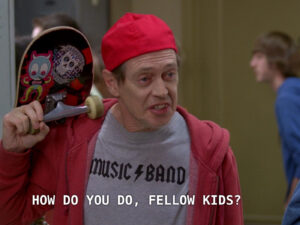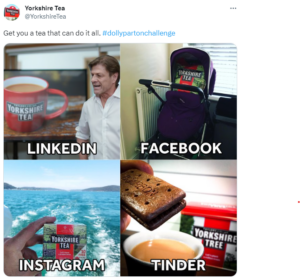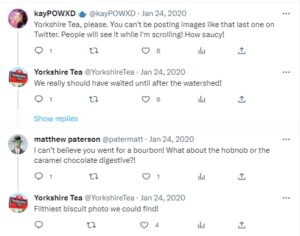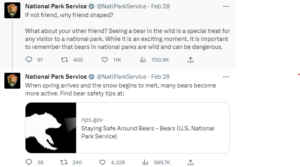Don’t Grimace! Comedy in Social Media is Here to Stay
How do you do, fellow meme enthusiasts?
No matter the extent of your social media usage, you probably heard of the summer’s most popular viral meme – the Grimace Shake. With an initial Instagram post of Ronald McDonald’s periwinkle peer that included the caption “it grimace i’m taking over,” McDonald’s dominated the social media landscape in June as influencers used the shake as a prop in short-form video content (see Association Adviser’s article on short form video), prompting mass awareness of the fast food chain’s special promotion. The speed at which the Grimace Shake gained popularity is in part due to the comedic follow-ups that McDonald’s accounts posted, and by tapping into the internet language of memes and comedy, it captured the minds of the younger generation.
And, while trade associations are unlikely to launch a special edition milkshake, the lessons of the Grimace Shake’s marketing campaign – as well as those organizations that similarly use humor – can help associations reach late millennials and Gen Z where they are. From Wendy’s sassy retorts to Duolingo’s unhinged TikToks, humor helps a brand’s social media stand out in the minds of an audience constantly inundated by advertising, and trade associations can take advantage of the engagement that humor brings to boost their membership.
Is Humor Right for Us?
Depending on the nature of your association, humor’s role in your social media marketing will vary. After all, it would be inappropriate for an organization to make a joke when posting about serious news or other developments in which clarity is paramount. It all depends on the information and the audience, and even groups whose typical social media content doesn’t lend itself to comedy can infuse a bit of humor into their posts.
To even begin to implement a social media strategy that utilizes humor, you need to audit the current state of your social media platforms much like you would with any other marketing initiative. Assess the platforms your organization is on, the frequency with which you post, as well as your current audience and how they engage with posts, if they do at all.
Once you complete your review, it’s time to set aside your current audience and consider the group you want to attract. Do you want to attract new college graduates? Government officials? Other association professionals?
When considering how to pander to your ideal audience with comedy, you should consider more than the problem your organization is solving. You need to ask yourself: What is the culture of our intended audience? Organizations representing the healthcare sector have a very different brand story than those in construction, but there are some universal questions you can ask that will help you pinpoint that culture, as suggested by White Label Comedy:
- What social media accounts are the ideal audience on?
- What age demographic are we striving to attract?
- What does our ideal follower do to relax in their free time?
- What TV shows do they watch?
- How do they name their pets?
Questions like these will give you an insight into content that can attract your intended audience as popular culture enjoyed by members gives you a baseline tone on which you can build the comedic aspect of your brand. References to popular culture can even serve as comedic content on their own as many iconic television moments have become widely circulated memes that are staples of online discourse, like the “Shut up and take my money” meme from “Futurama” or the “How do you do, fellow kids?” meme from “30 Rock.”


These types of memes can complement a larger social media strategy that incorporates humor and offer easy responses when interacting with comments on platforms like Twitter. For example, the “Shut up and take my money” meme could accompany a post about new association merchandise, or if your organization is implementing a new mentorship program, the “How do you do, fellow kids?” meme could accompany a post trying to attract participants. With memes, specifically, you should consider them as a complement to the joke as opposed to the joke itself, or you may find yourself looking like Steve Buscemi talking to those “fellow kids.”
Planning Comedic Marketing
After identifying your audience and the type of comedic voice that will attract them, it’s time to begin crafting content. When doing so, it’s vital to keep in mind that your purpose is to inform AND entertain. The ubiquity of advertising online causes consumers to avoid posts that are trying to sell to them, which is why social media marketing tends to take the approach of solving consumers’ problems rather than selling them a product.
In general, there are two types of humorous content you should plan to produce: evergreen and trending content.
Evergreen content is brand messaging that will work whenever you post it and is the backbone of your social media marketing (see the case study on the National Park Service’s Twitter below). These are posts you should plan and schedule ahead of time as they’re relevant any time of year. Evergreen posts can be used alongside more serious posts as part of your association’s yearly social media calendar. Especially for smaller organizations, this preplanned comedic content will be a boon that helps keep a consistent output as it requires little in-the-moment effort.
Meanwhile, trending content requires you to be more observant of internet conversations, reacting quickly. The window of opportunity to post about trending topics is short as the internet has a goldfish-like attention span, and the Grimace Shake is just the latest example of trending topics to sweep the internet. If you posted about it in June in the midst of the campaign, your post would likely go viral. If you tried the same post in July, however, it would fall flat as the campaign had ended.
Back in January 2020, the #dollypartonchallenge took the internet by storm as social media users posted pictures that they used on LinkedIn, Facebook, Instagram, and Tinder, and brands took notice. One of the best examples of brands participating in this challenge was Yorkshire Tea. Knowing its social media following is composed of tea enthusiasts, it posted four pictures of its product in different comedic or aesthetically pleasing scenes, and the post gained more than 1,000 likes and 100 retweets. With very little work, they hopped on a trend, and the comments showed their audience related to it.


Case Study: The National Park Service
When thinking about organizations that have an entertaining social media account, government agencies may not be the first ones to come to mind, but the National Park Service’s (NPS) Twitter account has been a master class in using humor in social media marketing in recent years. Like many trade associations, the NPS uses its social media accounts to convey important information about their services and events.
However, the NPS social media team does so in an eye-catching way by making extensive use of Twitter threads, and they’ve landed upon an effective model to gain engagement. A typical NPS post will begin with a joke or pop culture reference. In a post that went so viral multiple news channels like FOX and CNN covered it, the NPS posted:

Below this joke, the NPS’ team included an article about bear safety tips that directs users back to their blog, increasing the potential for future conversions.

Garnering more than 180,000 likes and 10 million impressions, that single tweet increased the NPS’ Twitter account by 160,000 new followers in the days following the post, according to their Social Blade profile.
The NPS’ team understood that its intended audience is young, outdoorsy people who will make up the next generation of national park visitors, so they crafted a social media message that will draw in viewers with that joke while driving those with interest in visiting national parks to check out their blog to learn more in preparation for their trip.
And the NPS’ strategy, like those of corporate entities like McDonald’s, can be scaled to meet the needs of an association. Think about the humor in your industry – the common themes that everyone in your industry relates to no matter their company – and capitalize on the shared interest among these individuals to drive them back to your website, which potentially can convert them to members.
Conclusion
Like it or not, social media is here to stay. And, as younger generations increase their time spent on these platforms, they can become association hubs for quickly communicating information and attracting new members. Implementing humor into your social media marketing now will put your organization miles ahead of your competitors by building that following while it’s still a novelty in the association marketing space. It’ll take time to find your voice, but just as one doesn’t simply walk into Mordor, you won’t simply materialize followers. It takes researching, planning, and a whole lot of hard work, but in the end, it will pay off in spades.


